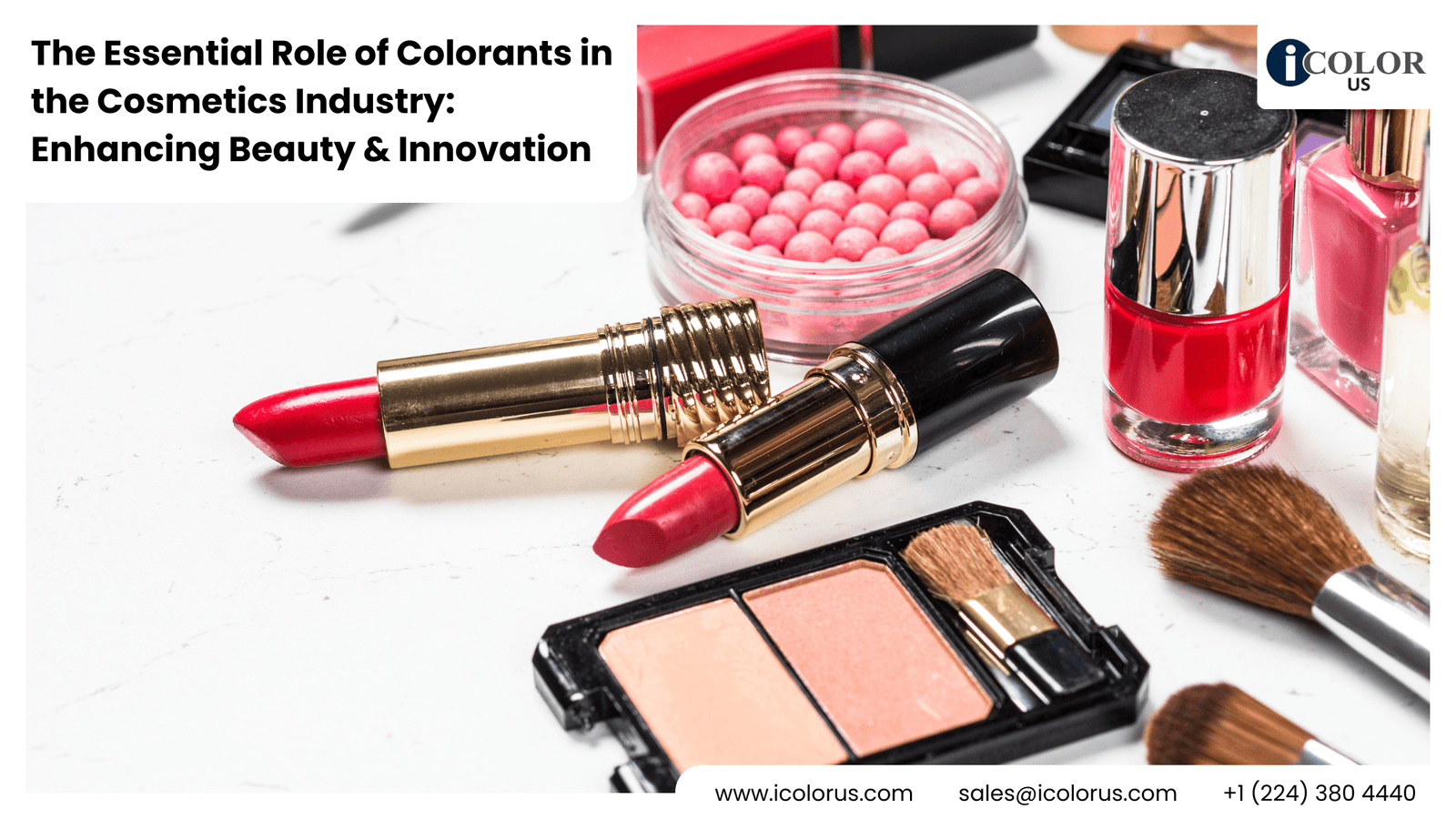Colorants in the Cosmetics Industry – Introduction
Colorants are the unsung heroes of the cosmetics industry. From the subtle blush on your cheeks to the vibrant hue of your favorite lipstick, colorants play a crucial role in enhancing beauty and allowing self-expression. But what exactly are these colorants, and why are they so essential? In this article, we’ll dive deep into the world of colorants, exploring their history, types, and the vital role they play in cosmetics.
History of Colorants in Cosmetics
The use of colorants in cosmetics dates back to ancient civilizations. Egyptians used crushed beetles for red dye and ground lapis lazuli for blue eyeshadow. The Greeks and Romans also had their unique methods, utilizing plant extracts and minerals to adorn their bodies. Over the centuries, the methods and materials have evolved significantly, transitioning from purely natural sources to a blend of natural and synthetic innovations.
Types of Colorants
Colorants in cosmetics can be broadly categorized into two types: natural and synthetic.
Natural Colorants
Natural colorants are derived from plant, mineral, and animal sources. These have been used for centuries and are favored for their perceived safety and eco-friendliness.
Plant-based Colorants
These colorants come from various parts of plants, including roots, berries, leaves, and bark. Examples include henna for hair coloring and beetroot for lip tints.
Mineral-based Colorants
Mineral colorants like iron oxides, mica, and titanium dioxide are widely used in makeup for their rich pigments and skin-friendly properties.
Benefits of Natural Colorants
Natural colorants are often less likely to cause allergic reactions and are biodegradable, making them an environmentally friendly choice. They also offer a range of hues that can create a more natural look.
Synthetic Colorants
Synthetic colorants are man-made and developed through chemical processes. They offer a broader range of colors and are often more stable and vibrant than their natural counterparts.
Development and Innovation
The development of synthetic colorants began in the 19th century with the advent of aniline dyes. Today, modern technology allows for the creation of complex and consistent shades that meet stringent safety standards.
Benefits and Drawbacks
Synthetic colorants provide long-lasting color and a wider variety of shades. However, they can sometimes cause skin irritation and environmental concerns due to their chemical composition.
Regulation and Safety
The safety of colorants in cosmetics is heavily regulated by bodies like the FDA in the US and the European Commission in the EU. These organizations set guidelines for the use of colorants, ensuring they are safe for consumers. Safety assessments and rigorous testing are required before any colorant is approved for use.
Colorants in Different Cosmetic Products
Makeup
Colorants are integral to makeup products like foundations, lipsticks, and eyeshadows. They provide the desired hues and effects that consumers seek.
Foundations
Foundations use iron oxides and other colorants to match various skin tones, offering a seamless blend.
Lipsticks
From bold reds to subtle nudes, the wide range of lip colorants allows for endless possibilities in lipstick shades.
Eyeshadows
Eyeshadows use both natural and synthetic colorants to create vibrant palettes that cater to different styles and occasions.
Skincare
In skincare, colorants are used more sparingly but are essential in products like tinted moisturizers and color-correcting creams.
Haircare
Hair dyes rely heavily on colorants, both natural (like henna) and synthetic, to provide a spectrum of colors that cater to diverse consumer preferences.
Impact of Colorants on Skin Health
While colorants can enhance beauty, they can also impact skin health. Some individuals may experience allergic reactions or skin sensitivities. Non-comedogenic colorants are preferred in skincare products to prevent clogging pores and causing acne.
Trends in Cosmetic Colorants
Eco-friendly and Sustainable Colorants
With growing environmental awareness, there is a trend towards using eco-friendly and sustainable colorants. These are derived from renewable resources and have minimal environmental impact.
Technological Advancements
Advances in technology have led to the development of more sophisticated colorants, including nano colorants that offer enhanced performance and biodegradable colorants that break down more easily in the environment.
Consumer Preferences
Trends in Color Choices
Consumer preferences for cosmetic colors are constantly evolving. Current trends include a shift towards more natural and subtle shades, as well as bold and unconventional colors for more expressive looks.
Cultural Influences on Color Preferences
Cultural factors also play a significant role in color preferences. For example, red is a popular color in many Asian cultures, symbolizing luck and prosperity, while Western cultures may favor different palettes.
Color Psychology in Cosmetics
The psychology of color plays a crucial role in cosmetics. Colors can influence mood, perceptions, and even purchasing decisions. Brands often use color psychology to create marketing strategies that resonate with their target audience.
Impact of Color on Mood and Perception
Colors like blue and green can evoke calmness and tranquility, while reds and pinks are often associated with energy and passion.
Marketing Strategies Using Color Psychology
Cosmetic brands leverage color psychology in packaging and advertising to attract consumers and convey specific brand messages.
Innovations in Colorant Technology
Nano Colorants
Nano colorants provide more vivid and long-lasting colors, enhancing the performance of cosmetic products.
Biodegradable Colorants
The development of biodegradable colorants reflects a commitment to sustainability, reducing the environmental impact of cosmetics.
Ethical and Environmental Considerations
Animal Testing Concerns
There is increasing consumer demand for cruelty-free products, leading to a rise in the use of colorants that have not been tested on animals.
Environmental Impact of Synthetic Colorants
The production and disposal of synthetic colorants can have environmental consequences, prompting the industry to seek greener alternatives.
The Future of Colorants in the Cosmetics Industry
Looking ahead, the future of colorants in cosmetics will likely focus on sustainability, safety, and innovation. Advances in biotechnology and green chemistry will play a pivotal role in developing new, eco-friendly colorants that meet consumer and regulatory demands.
Conclusion
Colorants are a fundamental component of the cosmetics industry, providing the hues and shades that define beauty standards and trends. As technology and consumer preferences evolve, the industry continues to innovate, balancing aesthetics with safety and sustainability. The future promises even more exciting developments, ensuring that colorants will remain at the heart of cosmetics for years to come.
FAQs
- What are the main types of colorants used in cosmetics?
- The main types of colorants are natural and synthetic. Natural colorants are derived from plant, mineral, and animal sources, while synthetic colorants are man-made through chemical processes.
- Are natural colorants safer than synthetic ones?
- Natural colorants are often perceived as safer because they are less likely to cause allergic reactions and are biodegradable. However, both natural and synthetic colorants undergo rigorous safety testing before being approved for use.
- What role does color psychology play in cosmetics?
- Color psychology impacts how consumers perceive and react to different colors, influencing their mood and purchasing decisions. Brands use this knowledge in marketing and product development to attract their target audience.
- How are colorants regulated in the cosmetics industry?
- Colorants are regulated by bodies like the FDA and the European Commission, which set guidelines and conduct safety assessments to ensure that the colorants used in cosmetics are safe for consumers.
- What are the current trends in cosmetic colorants?
- Current trends include a focus on eco-friendly and sustainable colorants, advancements in nano colorants, and a shift towards more natural and subtle shades, as well as bold and expressive colors.





